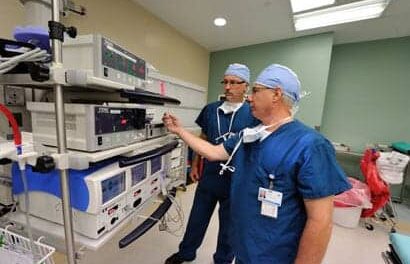By John Noblitt, MAEd, CBET
In my two previous Prep Talk columns, I delved into managerial topics such as general acceptable accounting principles and strategic planning. Information in both articles should support two types of budgets of which every healthcare technology manager must be aware: capital budgets and operating budgets.
The former category, capital budgeting, is a process in which an organization allocates major capital or investment for a return on that investment. In a pure business sense, the primary goal of capital budgeting is to increase the value of the company. Yet, many healthcare organizations are considered “nonprofit.” As a result, a healthcare entity may consider expanding services as an increase in value to the organization.
Moreover, most HTM managers will have to deal with two types of capital budgets—the hospital’s capital budget and the departmental capital budget.
This latter budget must fit into the organization’s capital budget, as the odds of getting funded for the departmental capital budget would be less likely if the expenditures did not support the organization’s capital budget. Case in point: If a hospital is going to add a new wing for cancer treatment, the HTM capital budget may incorporate a linear accelerator and test equipment to support that investment.
Understanding the Jargon
There are several types of budgeting methods used for capital budgets, such as the accounting rate of return, the profitability index, or equivalent annual costs—accounting terms CPAs or MBAs may use in a capital budgeting process. However, for the HTM manager, return on investment, or ROI, is a term with which one must be familiar.
In business, ROI is usually expressed as a percentage and is calculated by net profit divided by cost of the investment multiplied by 100. Percentages are used to compare different investment strategies easily for the best return on your investment.
If you are preparing for the certified healthcare technology manager (CHTM) exam, I would caution you about the ROI equation. The equation is quite simple: net profit divided by the cost of the investment. To fully understand capital budgets and ROI, you must have a strong grasp of terms like “net profit.”
Net profit is actual profit, and it includes the operating expenses that are realized during the investment. If we go back to our example of the linear accelerator, and for argument’s sake say that a treatment costs $1,000, the $1,000 is not net profit, as you must subtract all of the other expenses incurred by operating the equipment, such as labor, electricity, etc.
Just as you must have a clear picture of net profit, you must also have a full understanding of the cost of the investment. Again, for argument’s sake, we will say that the linear accelerator costs $1 million. You must understand that the cost of the investment would be much more than $1 million, as you must take into consideration service and training dollars, infrastructure upgrades, and costs associated with leasing the facility housing the equipment. It is imperative that the HTM department realizes these “hidden” costs in order to implement accurate capital budgets for the organization.
I would suggest that anyone taking the CHTM exam not only know what the formula is for ROI, but how it is calculated and what factors must be considered to provide accurate data. After all, this information may be on the exam. Other test questions may be designed to assess your knowledge of net profit as opposed to gross profit, or list the costs that would be associated with the purchase of a new investment.
Another term you might encounter on the CHTM exam when dealing with capital budgets and ROI is the “payback period”. The payback period on any investment is the time it will take to recover the monies invested in a project. Simply put, the shorter the payback period, the better the investment.
However, a simplified payback period does not consider the time value of money, or TVM—a term meaning that money today is worth more than money in the future. While I would not expect the CHTM exam questions to delve this deep into the subject matter, being aware other financial considerations would prove beneficial to the exam-taker.
To prepare an operating budget for an organization or department, one must anticipate the expenses that will be encountered during an upcoming fiscal year and balance those numbers with expected income. Remember: There are many factors that go into the operating budget—and in the next installment of PrepTalk, we will consider some of the items of which you must be aware in the quest to become a certified HTM professional.
I hope you find this information useful in your journey to becoming an CHTM.
John Noblitt, MAEd, CBET, is the BMET program director at Caldwell Community College and Technical Institute, Hudson, N.C.
Quick Study
1. To increase the possibility of securing departmental capital funding, the HTM professional must provide which of the following?
A. A capital budget that supports the institution’s capital budget
B. Detailed ROI
C. A detailed cost of the investment
D. A and C
E. A, B, and C
2. Which formula best describes ROI?
A. Capital/Investment
B. Net profit/Cost of investment X 100
C. Gross profit/Cost of investment X 100
D. Cost of investment/time of investment
3. To help evaluate different ROIs, they should be expressed in:
A. Percentages
B. U.S. dollars
C. Time weighted averages
D. Expenditures
4. Which of the following is most likely to be considered in a capital budget?
A Employee benefits
B. Labor rates
C. ROI
D. Gross profit
Answers: 1.E, 2.B, 3.A, 4.C





